Scientifically known as Helianthus, Sunflowers are essential flowers. Asides from beautifying your space, they are also the saving grace of most pollinator species.

Sunflowers are native to both North and Central America and consist of over 70 species of annual and perennial flowering plants.
There are different perennial sunflower varieties, such as Beach Sunflower, Western Sunflower, Maximilian Sunflower, Jerusalem Artichoke, Silverleaf Sunflower, and many more, which we’ll discuss here today.
Let’s get started!
Jump to:
- What Are Perennial Sunflowers?
- Different Perennial Sunflower Varieties
- 1. Silverleaf Sunflower (H. Argophyllus)
- 2. Beach Sunflower (Helianthus debilis)
- 3. Thin-leaved Sunflower (Helianthus x multiflorus)
- 4. Ashy Sunflower (Helianthus Mollis)
- 5. Swamp Sunflower (Helianthus angustifolius)
- 6. Western Sunflower (Helianthus Occidentalis)
- 7. Giant Sunflower (Helianthus giganteus)
- 8. Cheerful Sunflower (Helianthus x laetiflorus)
- 9. Maximilian Sunflower (Helianthus Maximiliani)
- 10. Jerusalem Artichoke (Helianthus Tuberosus)
- 11. Small-headed Sunflower (Helianthus Microcephalus)
- 12. Sun Catcher Sunflowers (Helianthus x Sun Catcher)
- 13. Autumn Gold Willow-leaf Sunflower (Helianthus Salicifolius)
- How To Grow And Care For Perennial Sunflowers
- Frequently Asked Questions
- Final Words
What Are Perennial Sunflowers?
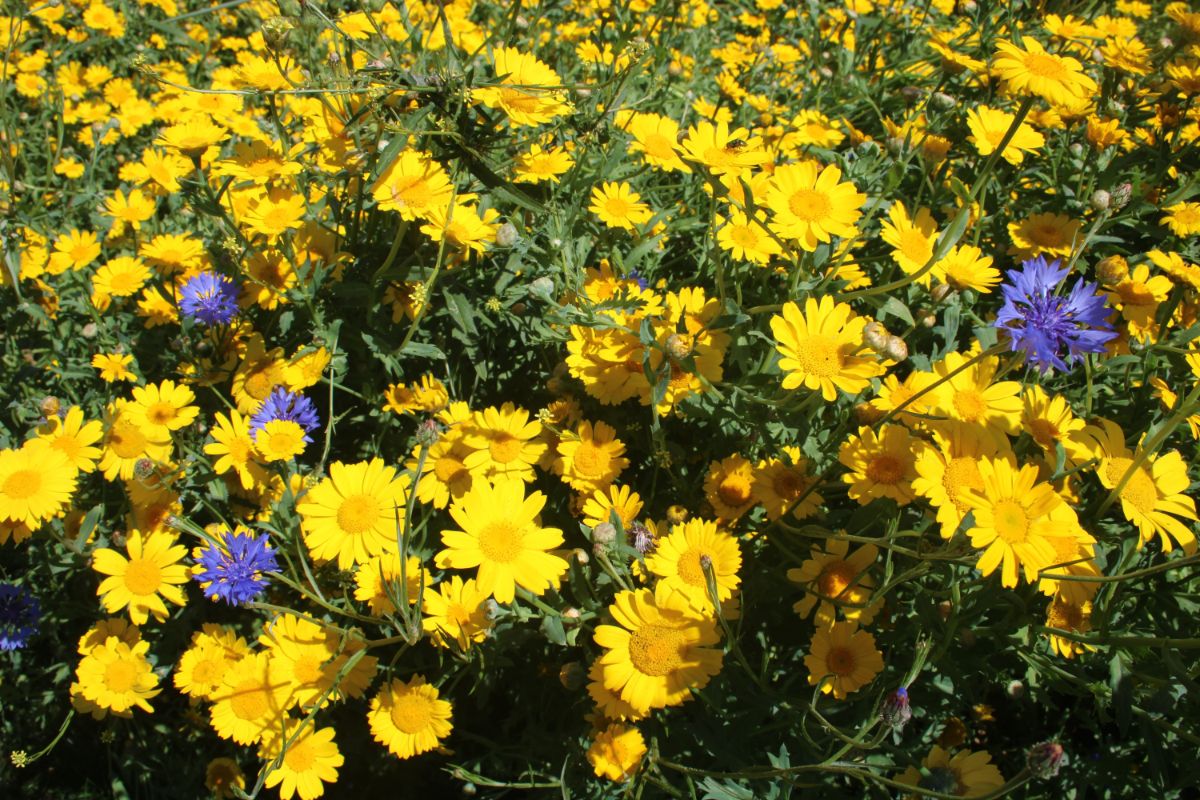
The Sunflower family is divided into two; the Helianthus Annuus, annual Sunflower plants, and the Helianthus perennial plants.
Is there any striking difference between the two?
There is, and it can be detected in the roots of both plants. You will realize that the Helianthus perennials grow tubers, unlike the annual perennials that spot small, stringy roots.
Perennial Sunflowers belong to the daisy family (Asteraceae). They make up a large chunk of the sunflower variants that are native to North America. A lot of those big and conspicuous sunflowers you see planted in gardens around are actually the Helianthus annual.
This article will open your eyes to the many beautiful perennial sunflower varieties that abound in different sizes and colors.
Different Perennial Sunflower Varieties
Perennial Sunflower plants might not be as bold and striking as their annual counterparts, but they make a statement still in their own little way. Let's see below 13 great Sunflower plant ideas you should totally consider having in your gardens.
1. Silverleaf Sunflower (H. Argophyllus)
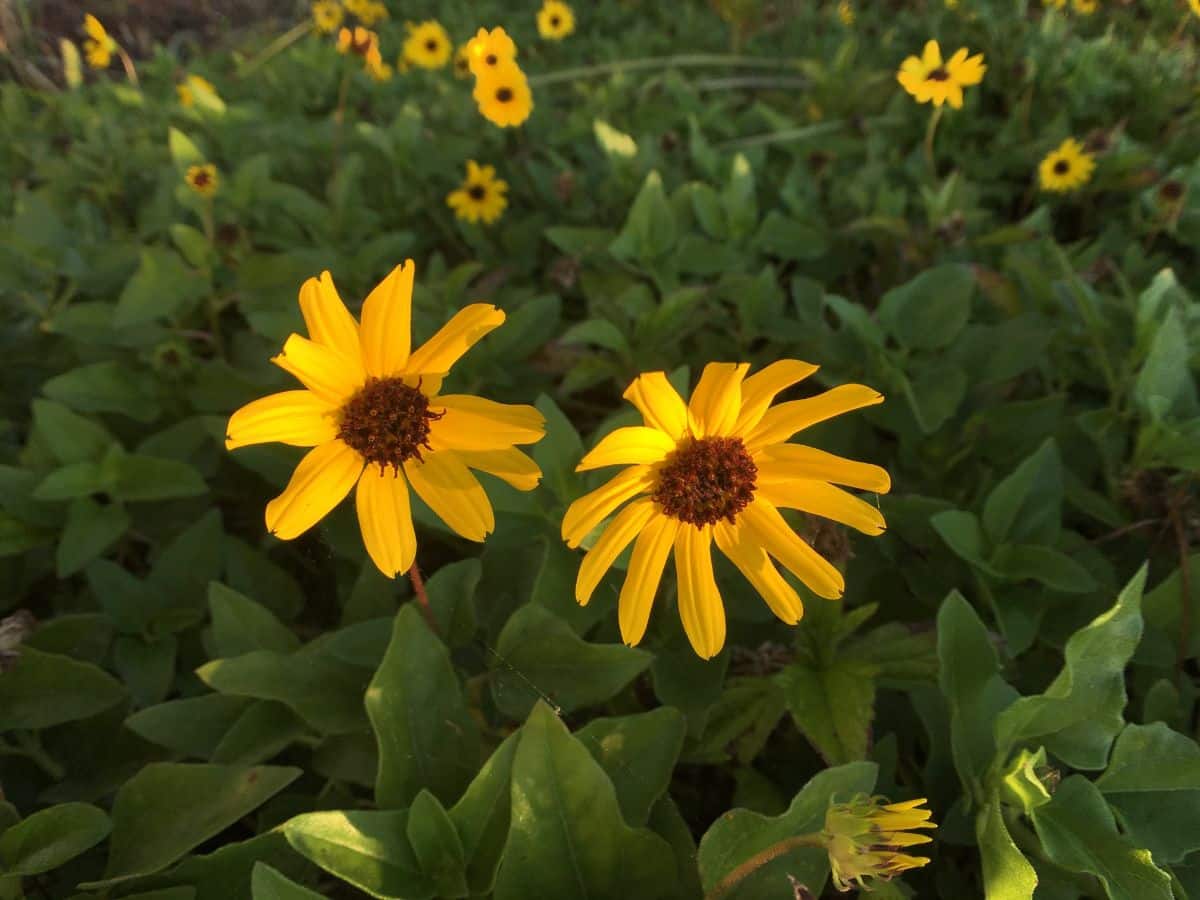
As you might have guessed, taking a clue from its name, the Silverleaf’s prominent feature is its very silvery leaves. Its leaves are so soft and coated with silky fuzz.
Silverleaf’s flowers are usually tall; you'll find them as tall as 6 ft. This perennial Sunflower is one you should consider having in your garden.
2. Beach Sunflower (Helianthus debilis)
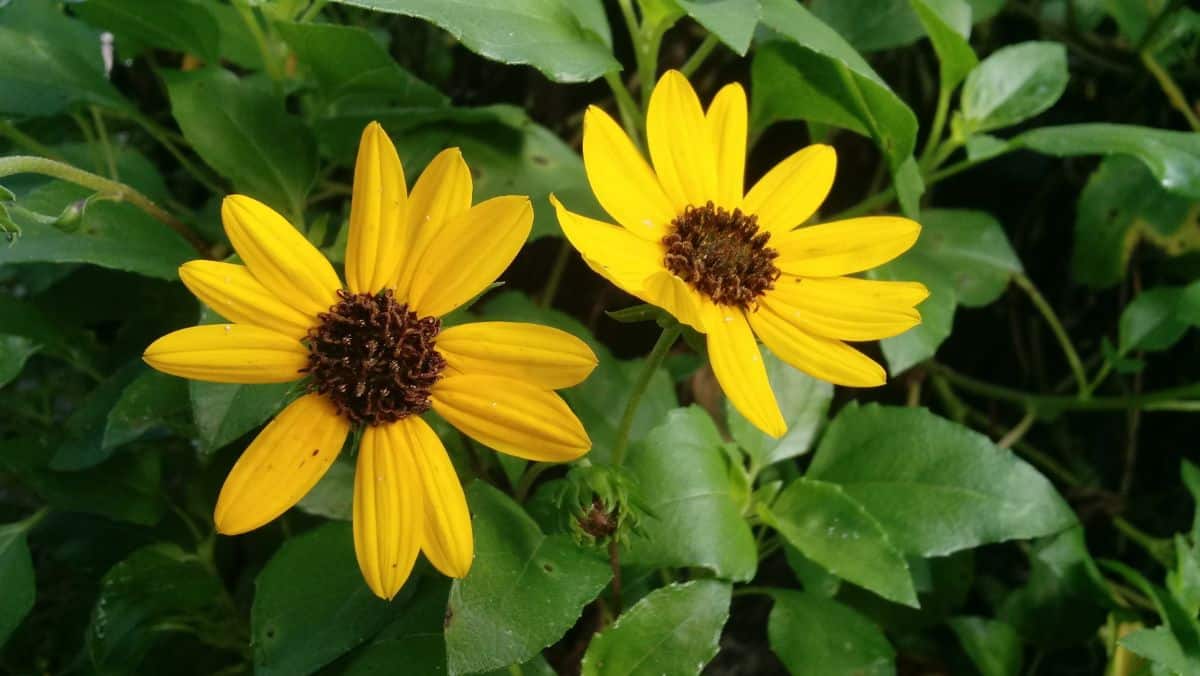
One striking feature of the Beach Sunflower is its fast and easy spread.
They are best suited for planting in coastal gardens as they tolerate salt better than most plants and thrive in sandy soils.
Another name the Beach flower goes by is; the East Coast Sunflower dune or Cucumberleaf Sunflower.
3. Thin-leaved Sunflower (Helianthus x multiflorus)
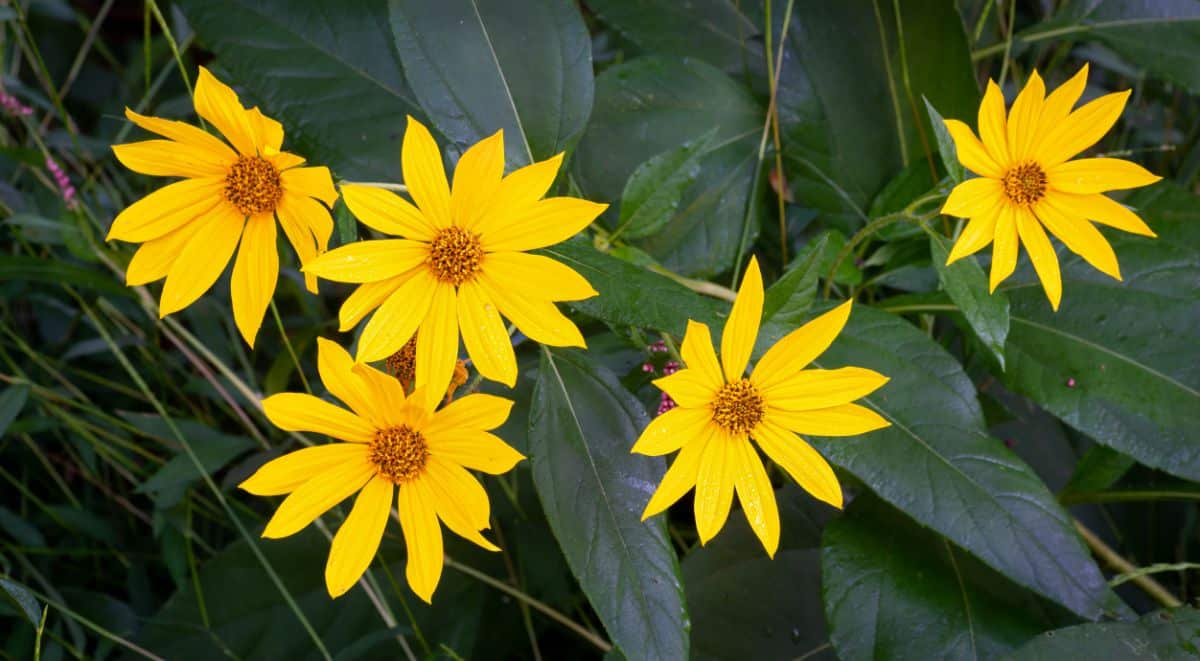
The Thin-leaved sunflower is a cross between the annual sunflower and the perennial.
There are a number of cultivars of this plant, some of which is the ‘Loddon Gold’ with double bloom features and the potential of growing as tall as 6 feet. There is also the ‘Capenoch Star’ with very attractive Sunbright yellow flowers. This cultivar can grow up to a meter.
4. Ashy Sunflower (Helianthus Mollis)
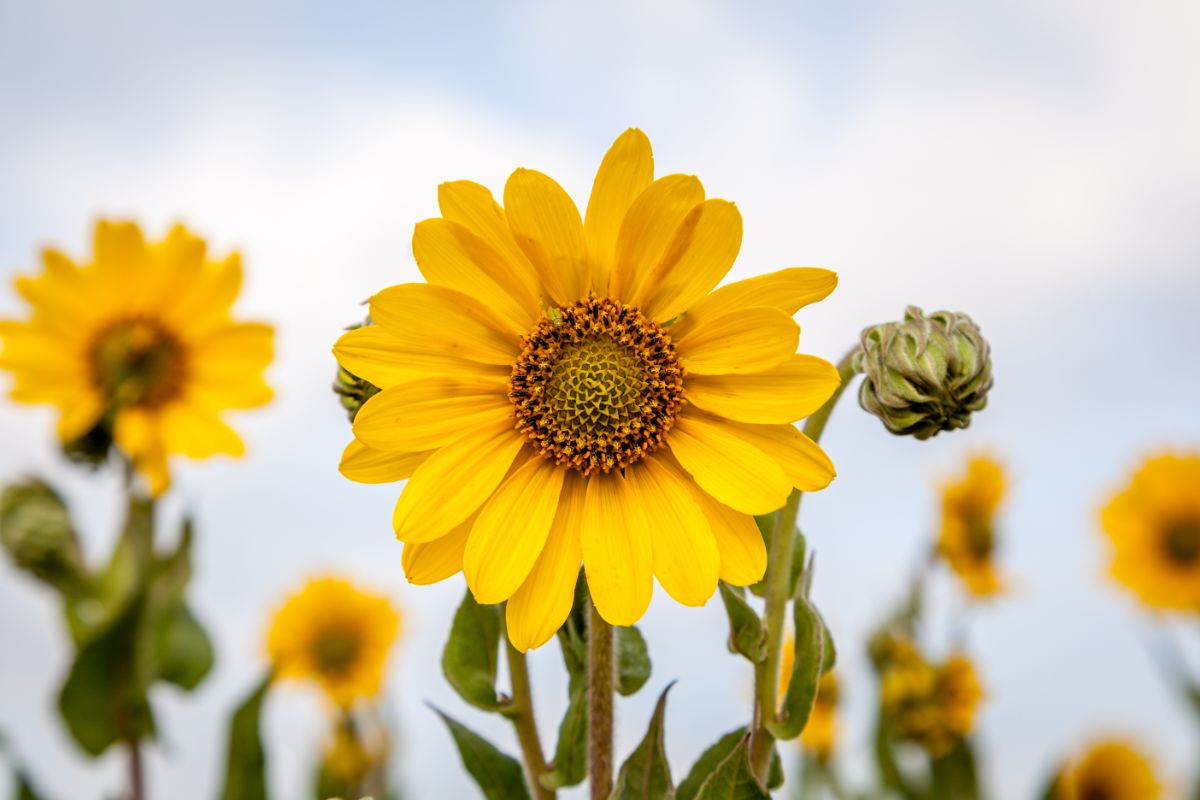
One tall perennial Sunflower with fairly big flowers measuring about 8cm, the Ashy Sunflower is one beautiful plant with sunny bright flowers.
They are native to the Central and Eastern States in the US. Ashy sunflowers are quite sturdy; they are hardy in zones 4 - 9 and do well in full sun and even in poor soil conditions.
This sunflower is a pretty long bloomer; it blooms from the month of July all through to September. They have the potential to grow as tall as 4 ft and spread as wide as 3 ft.
They, most certainly, make a great addition to your garden plants.
5. Swamp Sunflower (Helianthus angustifolius)
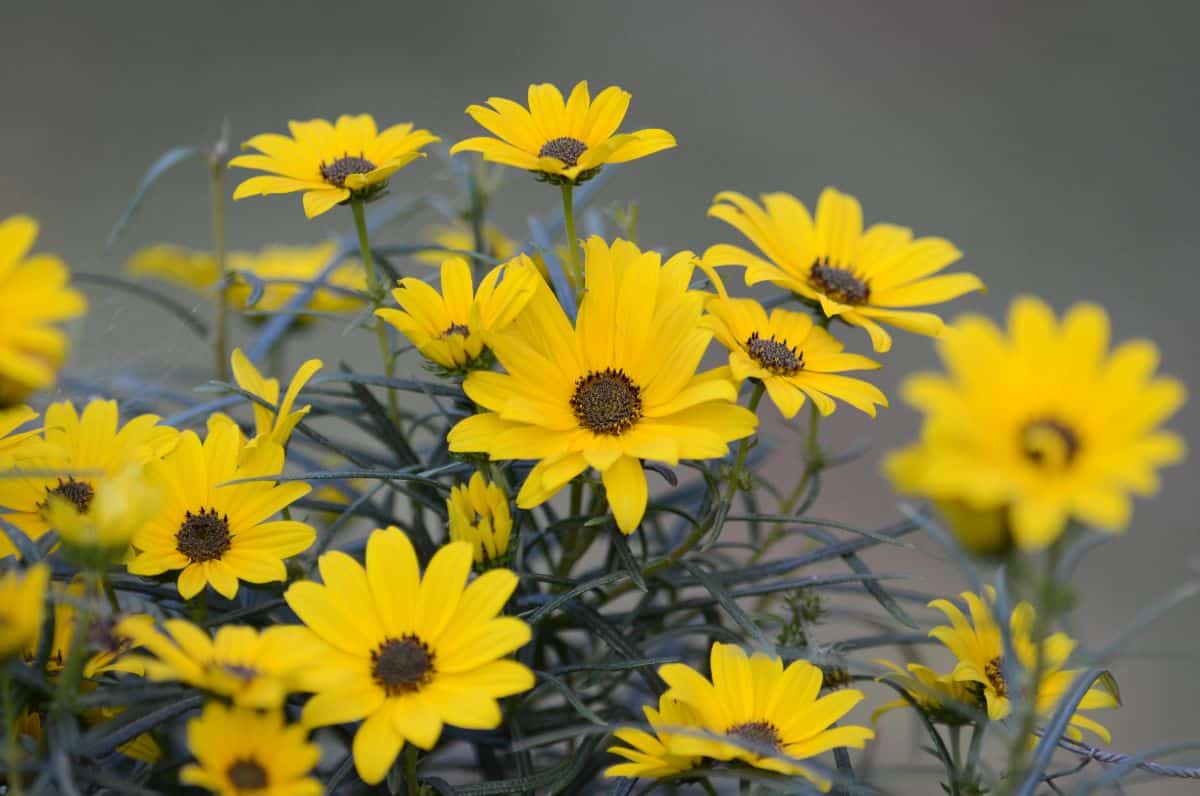
A quite hardy perennial, Swamp Sunflower would thrive still, under poor soil conditions and on salty bases. Wet and moist soil would not be a problem for their growth process.
Aside from that, their tall and pretty flowers make a beautiful sight in your garden.
Yes, the swamp sunflowers can get as tall as 10 feet and are considered to be one of the tallest sunflowers ever.
They play an essential role in the lives of native bees; in addition, they're a source of food and nectar for butterflies and birds migrating late.
Their bloom season? Late September or early October.
6. Western Sunflower (Helianthus Occidentalis)
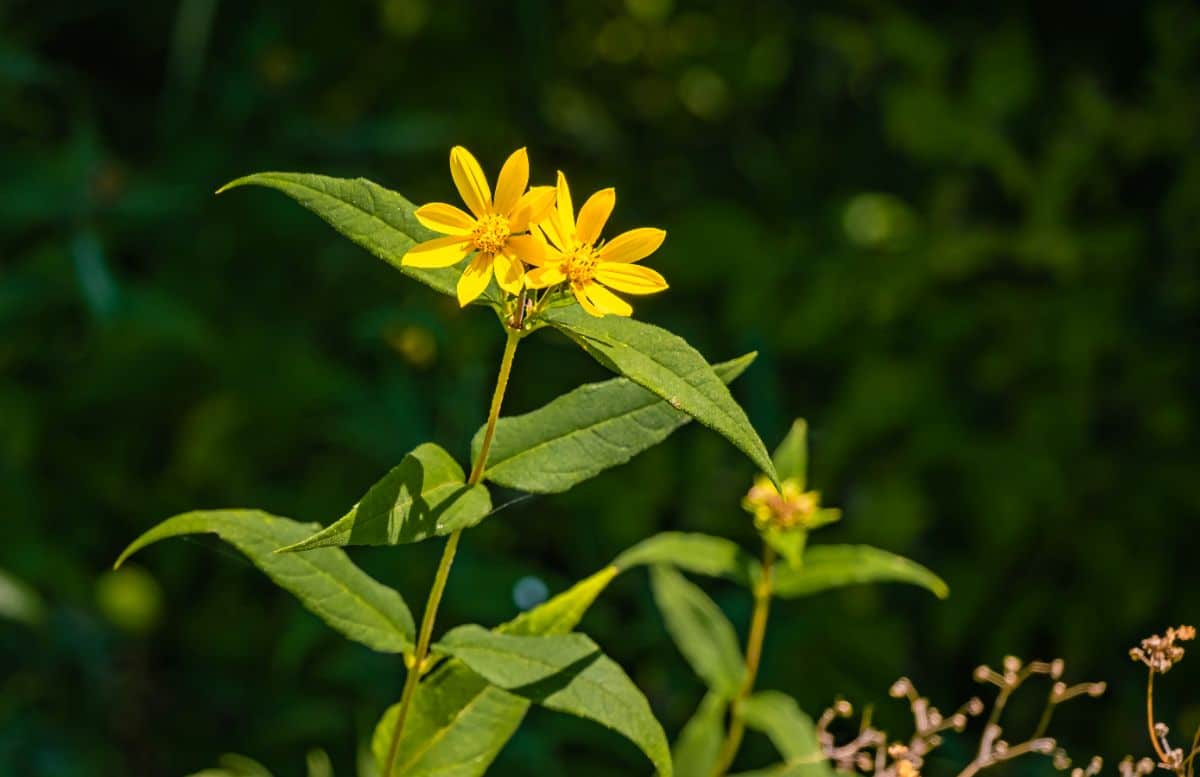
It is pretty easy to conclude that the Western sunflowers are found in North Western America, but in actual fact, they are native to Central and Eastern North America.
We call them excellent soil stabilizers. The Western Sunflower would best be suited for a home garden because of its size. This daisy-like specie of perennial is way shorter than most others. Its flowers are, on average, 2 inches in size.
One edge of Western Sunflowers over other plants is that they are less invasive with a spread that can easily be controlled.
They are hardy in zones 4 - 8; they are not so picky when it comes to soil types, save for the clump-forming plants that struggle in heavy clay soils.
7. Giant Sunflower (Helianthus giganteus)
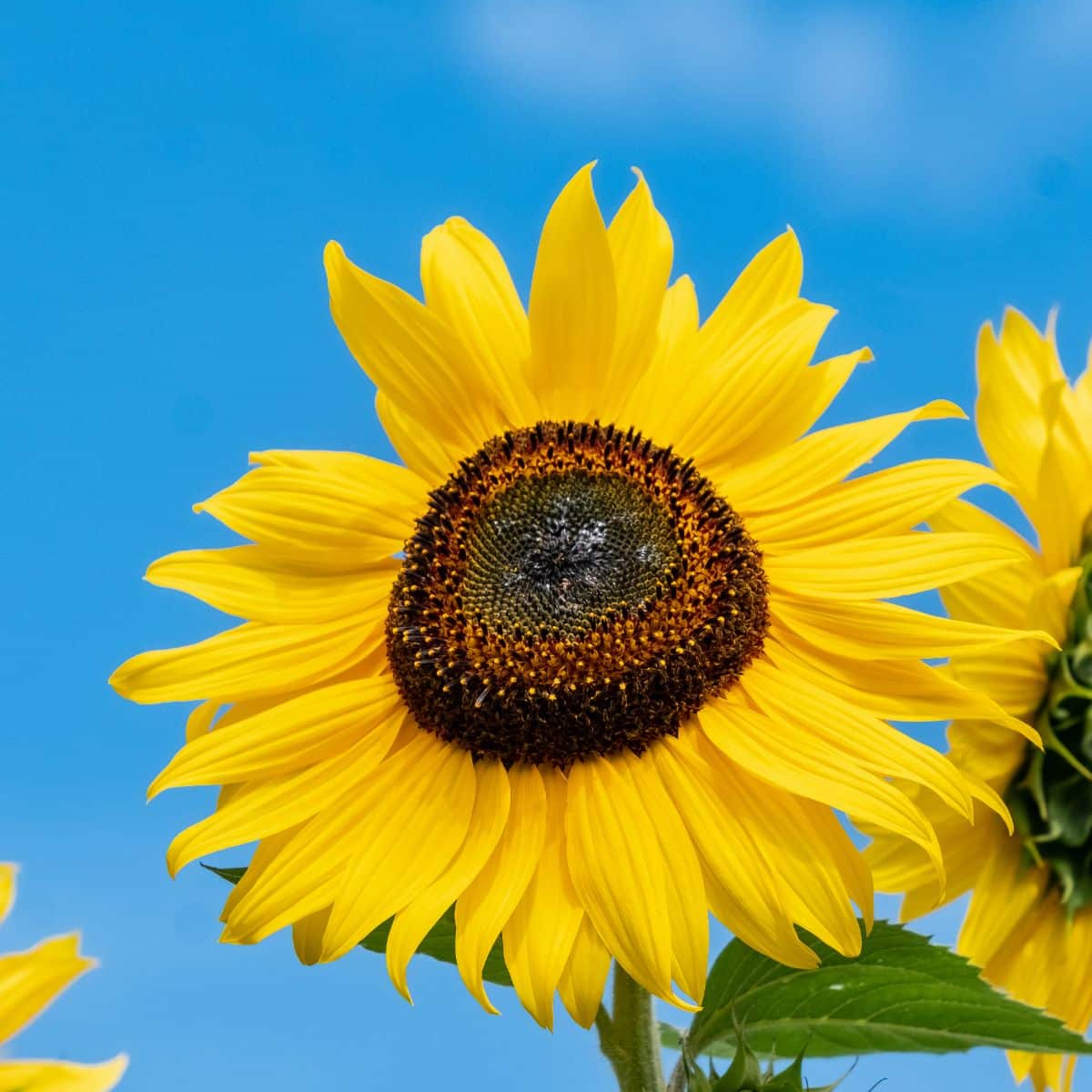
The giant sunflowers do share some similarities with the swamp sunflower. They both do very well on moist, mushy areas and woodlands.
This specie of sunflower grows super fast with edible leaves and seeds that taste so great when cooked. As the name implies, Giant sunflowers are not just large in size but in the heart too.
They provide food, shelter and nectar for so many species, which explains why bees, birds and butterflies are so attracted to them.
Their bloom season begins in July and sustains all through to September, spotting blossoms with golden yellow flowers with its centers, dark yellow.
8. Cheerful Sunflower (Helianthus x laetiflorus)
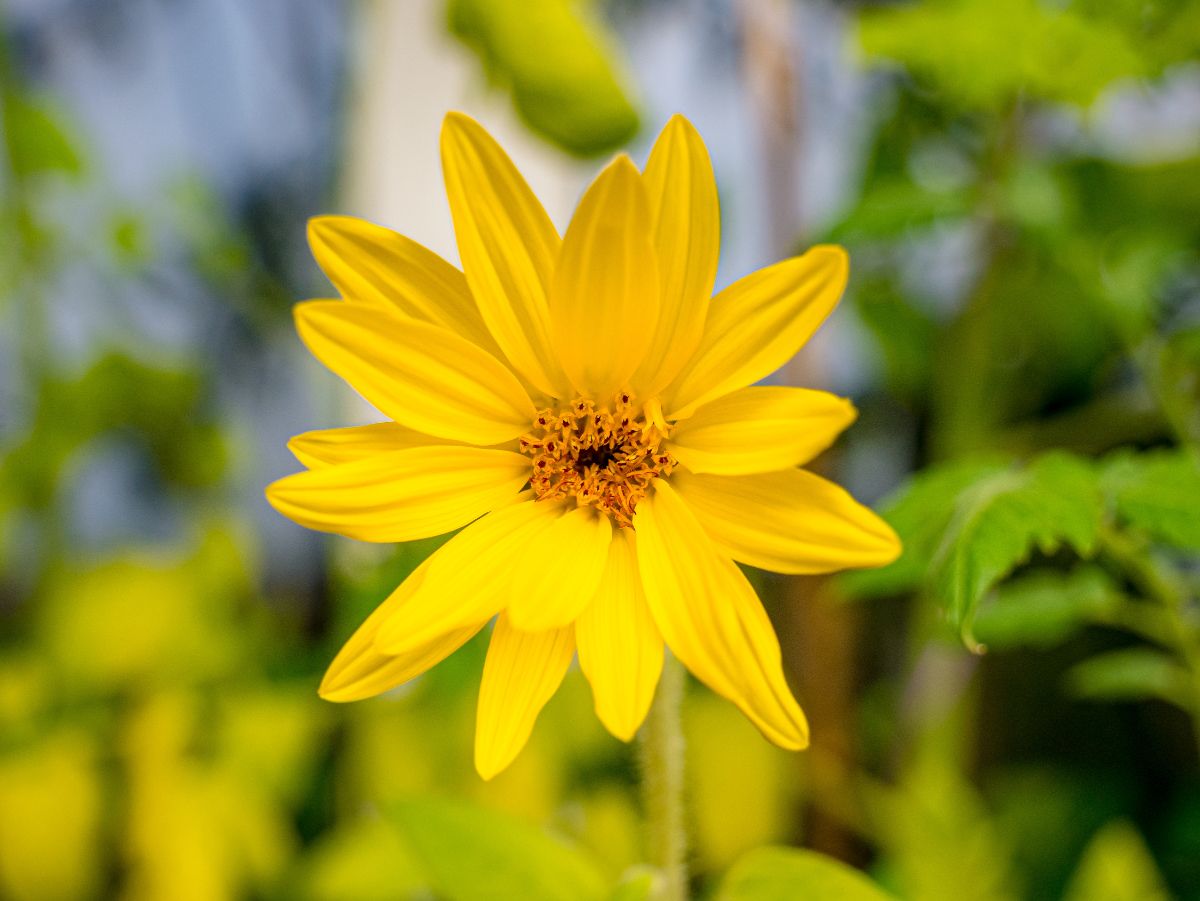
You know it wouldn't be named ‘cheerful’ if it wasn't, right?
This Sunflower is not just cheerful but a long blooming one. You would find their bloom season stretch from August to November in some areas.
Cheerful Sunflower petals are colored deep butter yellow with a red stamen in the middle. They can grow as tall as 7 feet and survive under very hot temperatures.
This plant has edible roots/tubers and is best planted under full sun conditions in well-drained soil.
9. Maximilian Sunflower (Helianthus Maximiliani)
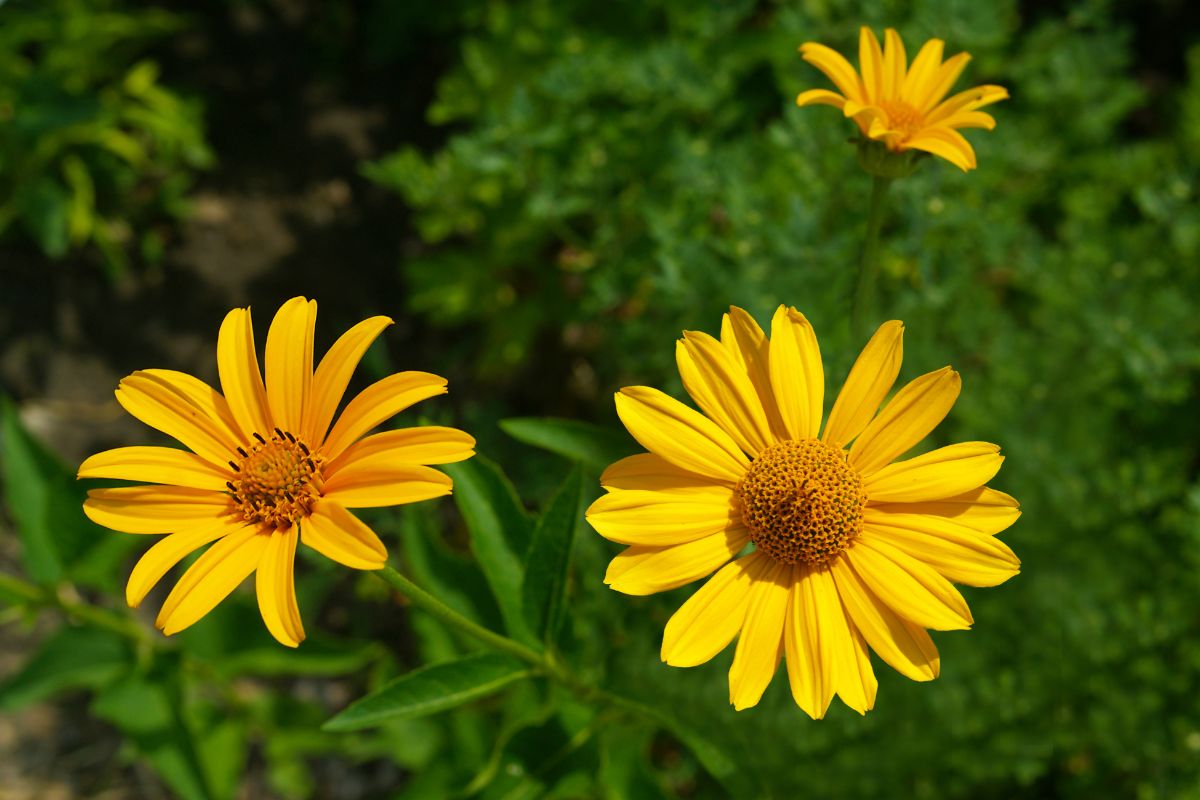
Due to its ability to self-seed, this Sunflower is considered an excellent Naturalizer.
The Maximilian Sunflowers are very large, and you will find them so easy to grow and maintain.
They have a high threshold of tolerance for unpleasant soil conditions like dry or moist soils, clay or sandy soils, drought and so on. Because of this, the plant comes highly recommended for beginners.
The Maximilian sunflower is quite a showy one; they have large flowers colored bright yellow, with a center that spots a deeper yellow shade. They can grow up to 10ft tall under the right moisture level.
Their bloom season begins in the month of August and sustains till September, attracting late-season birds and butterflies. Maximilian sunflowers are hardy in zones 4 - 9; they are quite sturdy and make a perfect choice for wildflower gardens.
10. Jerusalem Artichoke (Helianthus Tuberosus)
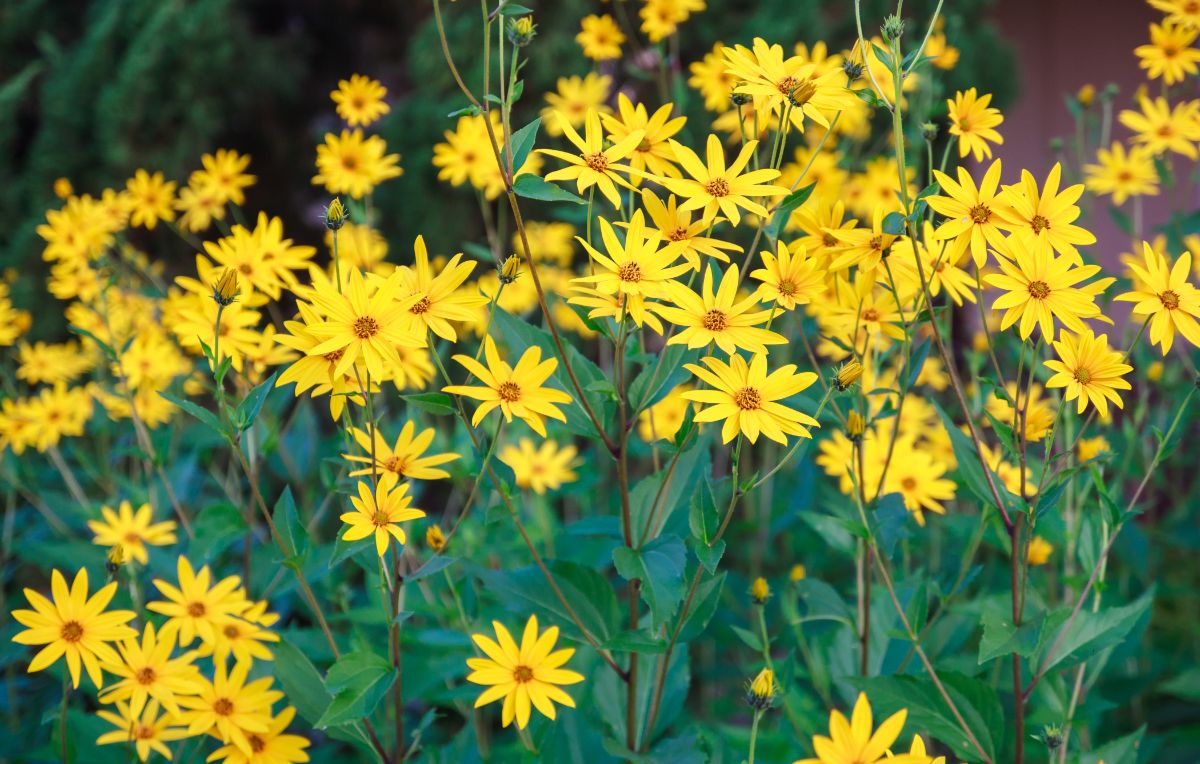
We love this perennial Hibiscus flower because it is quite a low-maintenance one. Another reason why we love it? They are edible and blessed with very tasty roots. Do you want more reasons? They make an absolutely gorgeous sight as cut flowers.
You will find them hardy in zones 3 - 9. They grow well in either moist or dry and well-drained soil, under full sun conditions. Their bloom season begins in August and continues till the end of September.
During this period, you will see them spot bright yellow flowers about 4 inches wide. The Jerusalem Artichoke has excellent flexibility in its uses. They are great for wildflower gardens, perfect still for cut flower ones and are nicely suited for native gardens too.
11. Small-headed Sunflower (Helianthus Microcephalus)
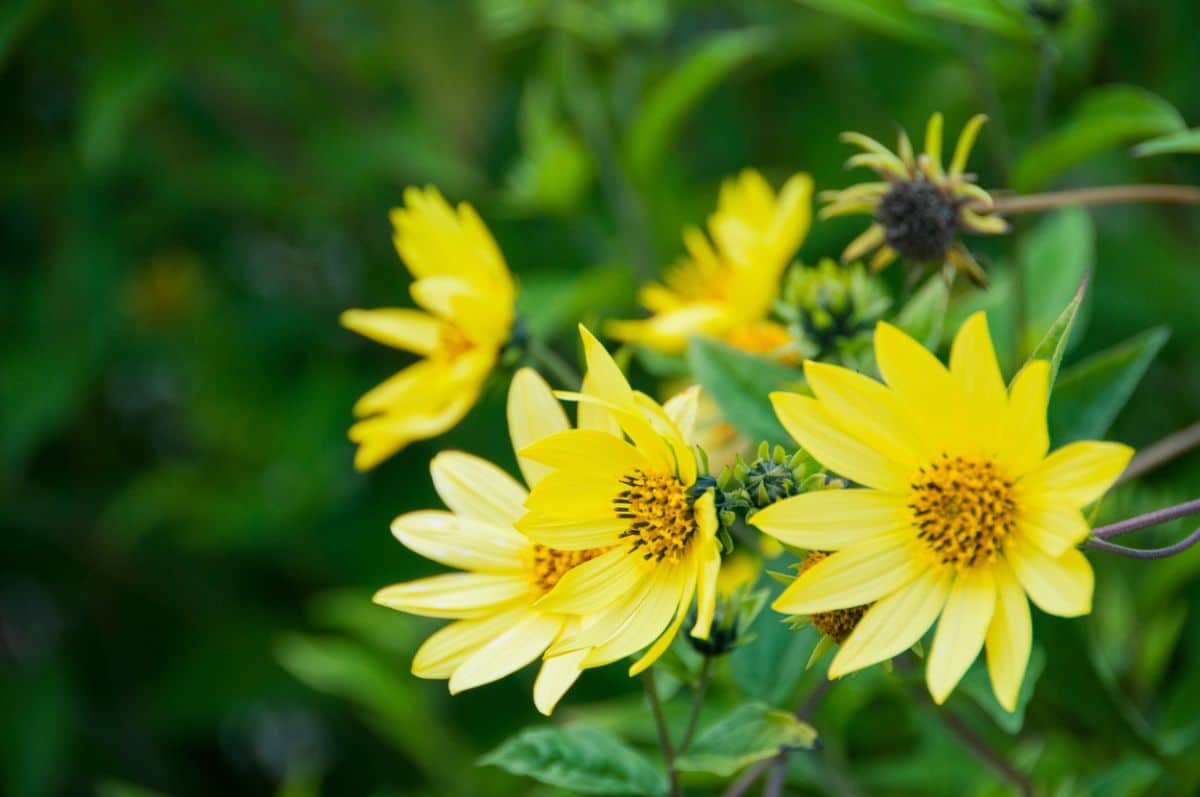
This perennial Sunflower plant can be found most times along the road in Eastern North America. You would often find it in a cluster of yellow blooms.
The small-headed Sunflower plant can be described as a sturdy one. It can thrive in moist or dry soil and would survive still under partial shade.
One prominent feature of this plant is its ability to self-seed, making it one of the perennial sunflowers that are perfect for naturalization. Although, this can be controlled by ensuring the spent blooms are cut off.
This plant has the potential to grow up to 6ft tall, with flowers that widen by 3 inches when they bloom.
Small-headed sunflowers are also known by the name; Small Woodland Sunflowers; their bloom season begins in late Summer and lasts all through till Fall.
12. Sun Catcher Sunflowers (Helianthus x Sun Catcher)

The sun catcher perennial is the compact version of the Giant Sunflowers. They are small but heavily branched with bright yellow leaves and a brown-colored middle.
This plant is as sleek as it is cute, which explains why butterflies and bees stay glued to them.
Quite hardy to an extent. One edge it has over most plants is that it isn't a fussy plant and requires little to no care.
Suncatchers are quite versatile too. You can have them planted in vases or in a large-scale garden. They would pretty much have the same aesthetic effects regardless.
Greatly desired by pollinators, their bloom season lasts for quite a long while. It begins in July and lasts until frost. They fare better under full sun conditions and well-drained soil but will thrive under partial shade.
For best results, practice deadheading on them to ensure the blooms keep conditions and prune the plant at the end of the autumn season.
13. Autumn Gold Willow-leaf Sunflower (Helianthus Salicifolius)
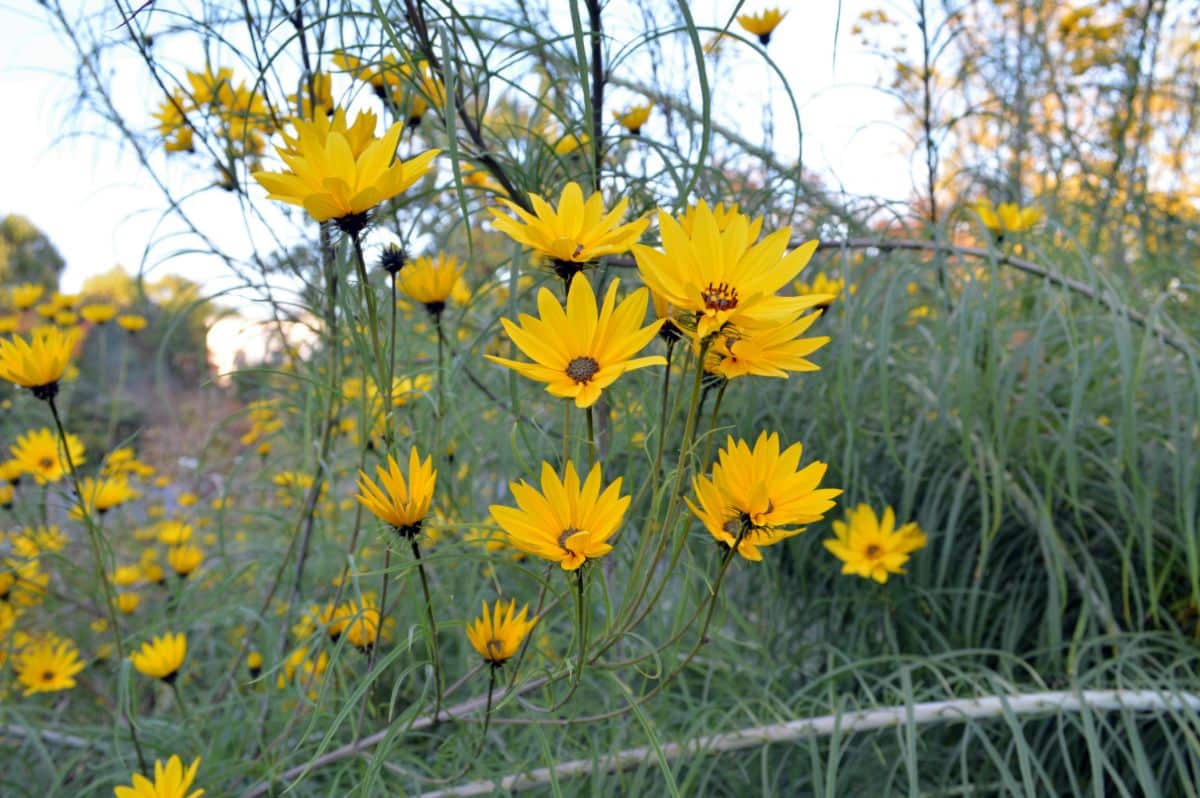
The Autumn Gold is beauty personified. They are a bunch of compact golden flowers with a unique texture surrounded by mounded bushy foliage.
Their bloom season begins in late summer and lasts till fall. During this period, the daisy-like flowers burst out in a multitude of golden shiny blooms that light up your entire landscape.
Autumn Gold are excellent pollinators; they attract butterflies and birds that are drawn to their nectar. For best results, plant under full sun in well-drained soil. Once established, they can tolerate drought and heat.
How To Grow And Care For Perennial Sunflowers
In plant growing, growth and maintenance should be taken seriously. Perennial sunflowers require consistent care in controlling how they spread. This is particularly very useful for those who are managing a small space.
We will highlight below some best growth and care practices that you would definitely find useful as you begin your perennial sunflowers planting journey.
Soil Needs
For most Sunflower plants, rich and fertile soil on well-drained ground is better for their well-being. This does not mean they would not survive in poor soils; some of them would.
But your aim is not for them to struggle for survival somewhat, thrive effortlessly, right?
Watering requirements
The bulk of perennial sunflowers do not take kindly to drought situations, so watering should be timely and consistent.
Sunlight Requirements
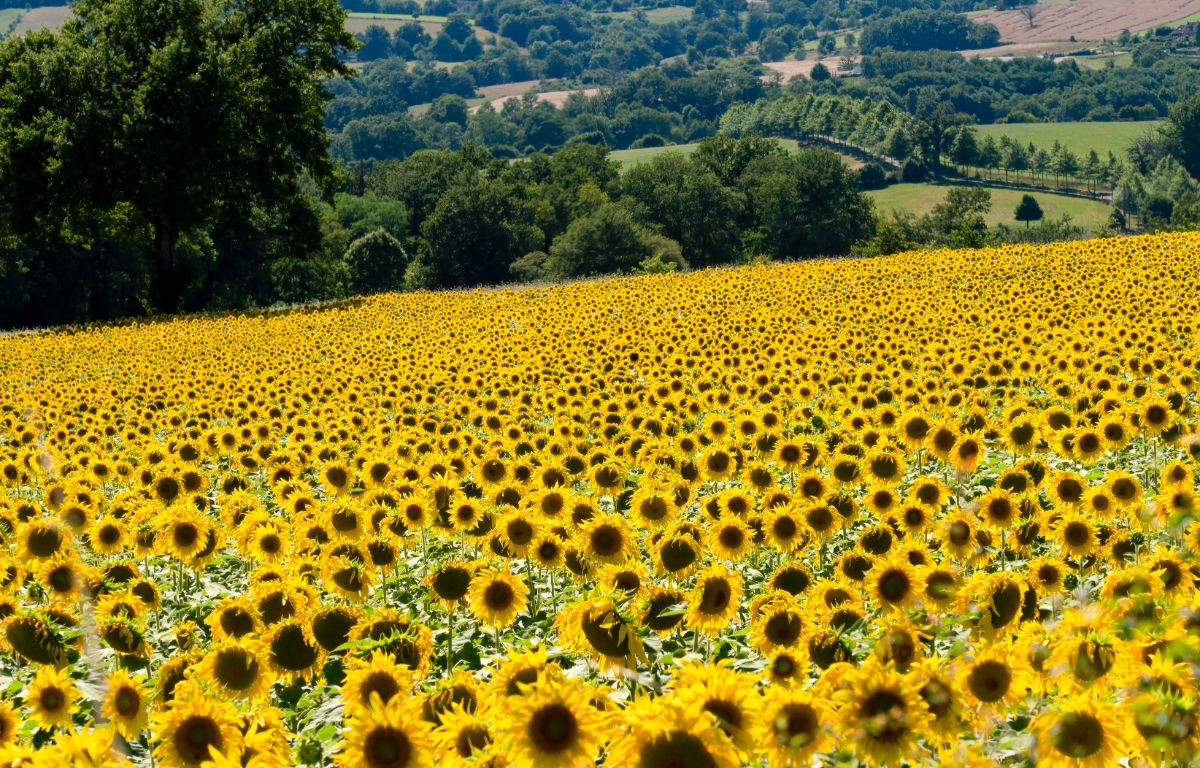
Perennial sunflowers fare better when planted under full sun conditions.
Spacing Needs
Perennial Sunflowers spread very fast and fill up an area in such a short time if not controlled.
To this end, the perennials should be divided every 2 or 3 years and spaced about 3ft away, giving the plants ample space to spread as they grow.
Pruning requirements
Pruning should be done on the plants in Spring time. As you trim, see that the taller plants are growing in an upright manner. If they aren't, support them with a stake.
Frequently Asked Questions
Should I grow perennial sunflowers?
Even though perennial sunflowers are not as colorful as the annuals, there are other tangible reasons to grow them. Let's look at a few of them below:
· They are edible
· They can be used to create thick screens
· They enable you to create your own mulch & compost
· They help reduce water pollution & erosion.
· They are highly deer resistant.
· Perennial Sunflowers encourage wildlife.
· They are quite attractive to pollinators
How Well Do Perennial Sunflowers Spread?
Perennial sunflowers are super excellent spreaders. They fill up the entire space in a concise while. However, this can be managed. You can have the spread under your control by cutting them back after their bloom days.
Final Words
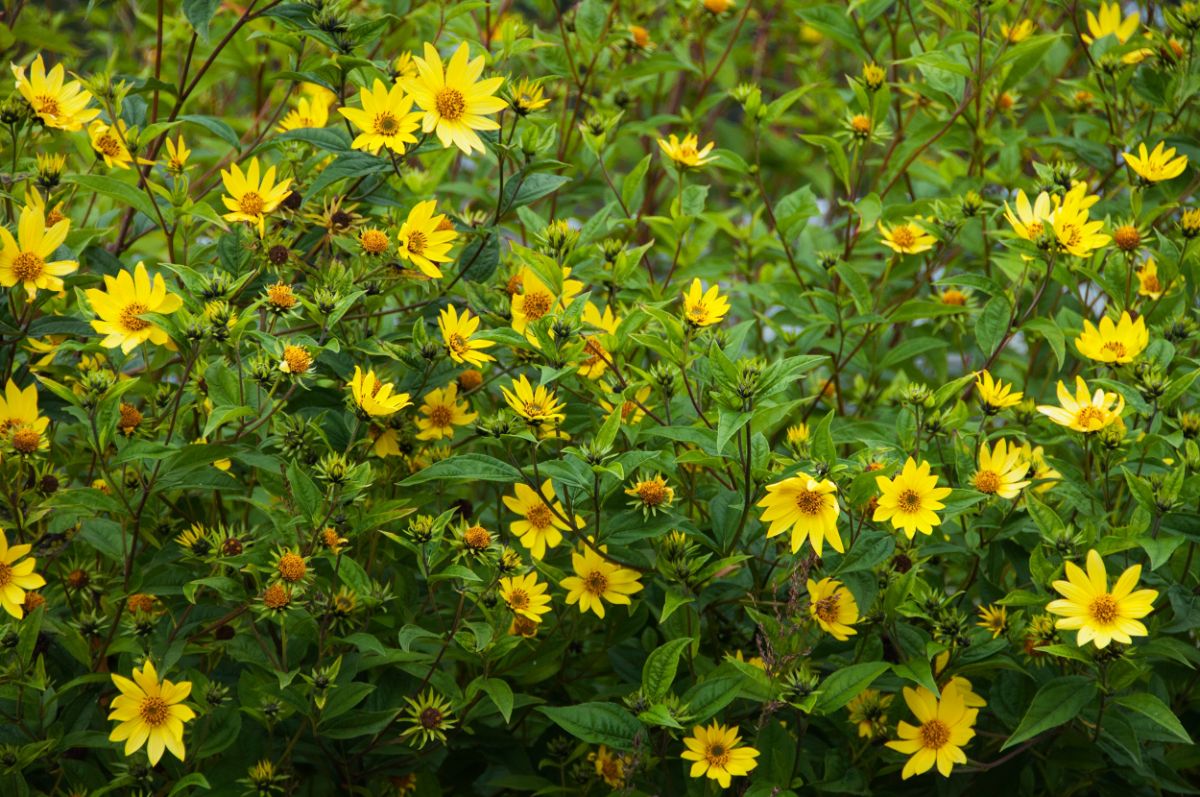
There are many reasons to make perennial Sunflowers your choice of flowers to be planted in your garden space. If you dislike their long-lasting traits, you will most definitely find their blooms attractive.
If their physical attributes do not move you, the fact that they are super easy to grow should get to you.
The point is that there is always something to love about these gorgeous, eye-catching flowers.
Many of us are used to tall and large single-headed annual variants of the sunflowers that die off after completing a planting season, but this article opens you up to an array of perennials that you can grow seamlessly, once and for all.




